What’s different about how athletes prepare for their events during the Play Offs or Championship Games compared to their regular training routines?
Elite athletes are performing very close to their genetic potential. So in their strength and conditioning programs it is a very fine line between making them better and over training. It's all about peaking.. .. They need to show up physically, and psychologically at a very specific moment. There is no room for a tired, sore over trained athlete. During training there is a lot of thought put into the balance of effort distribution: workouts in the gym, actual time practicing the sport and recovering. Most of the intense gym workouts happen in the off season.. As the games get near... the athletes will concentrate on keeping their joints mobile and their nervous systems sharp.. as well as getting enough sleep and nutrition.
Can you shorten recovery times between workouts or intense competition? If so, how?
One of the measures of fitness is the ability of the body to recover between bouts of overload or intense activity.. this is a physiological adaptation of training.. so it makes extremely fit athletes be able to train more often than us normal folk... However, there is a limit to what the body can do on it's own, athletes concentrate on recovery as intently as they do their workouts.. It's in the job description of being an elite athlete..
There are ways to help even the most fit people recover.. The basis of shortening recovery time is to increase circulation to working muscles, breaking up scar tissue or adhesion, and decreasing inflammation. This is more specifically addressed in next question.
What are the top 5 best recovery techniques for competitive athletes?
When peak performance is the goal, recovery of all body systems is the key. The muscle tissue, connective tissue and nervous system must have all "guns to the front" and be ready for action. The intense explosive strength and conditioning workouts are usually the glorified part of elite athlete training, however in reality this only happens in the pre season. Once its 'Game Day' and the season starts, the focus of the athlete is on a well planned recovery regimen. Seasoned athletes know exactly what their body needs to maintain peak performance during a hard core game schedule. Some of the rookies may still be experimenting with the right formula.
These are are the main components of recovery regimen:
- Mobility
- CNS Confidence
- Sleep and Nutrition
1) Mobility- From intensive travel and an aggressive game schedule, muscles get tight and joints get stiff. Full capacity performance cannot happen on a joint with a limited range of motion. Decreased range of motion can lead to compensations and injury in a hurry. By returning each joint to its full mobility, the entire kinetic responds fully and correctly, maximizing power, efficiency and agility.
Best ways to mobilize:
Foam Rolling aka Self Myofascial Release- You want to roll muscles that cross all joints necessary for movement. Do not leave any out or you may be imbalanced. Eventually you will learn where your trigger points or hot spots are located, then concentrate on those, and just check in with the other areas.
Massage: This is best post game or workout. Massage is a a more passive way to attend to the myo-fascial junction. It can get overactive muscles to finally shut up. Massage is also great for breaking up adhesions and scar tissue from an aggressive workout. It also increases systemic circulation, necessary for faster recovery. Best bet, find a masseuse that and knows their anatomy and can work specifically with your issues.
Active Stretching: Basically just moving through your full range of motion at each joint is active stretching. Moving your hips, pelvis, ankles and shoulders is most important. Great to do while you are traveling, at the airport, in your hotel etc. Don't let these joints get used to a limited range for too long.
2) Central Nervous System Confidence- This is where the brain and muscle collide, and can be achieved by a well planned dynamic warm up (DWU) . By moving through a systematic DWU, the athlete can activate and integrate the muscles and neurons needed for performance. Once activated, these motor units stay turned on throughout the practice or game to allow the body to react and move reflexively. This also helps break the inertia of sitting or traveling for a long time. Best to do after travel, or immediately before a game of practice. DWU can also be done between games if there is a long waiting period.
3) Sleep: Getting enough quality sleep is also key. It is when you are sleeping that your body presses the 'reset button' and goes under physiological construction. Muscle and nerves gets repaired, and neurotransmitters are produced. Study after study shows that lack of sleep impairs decision making skills, decreases re-activity and compromises the immune system. The harder you play or train, the more sleep you need.
4 and 5) Nutrition and Hydration: Taking in the correct amount of calories in the proper nutrient ratio is important. The human body cannot repair without the proper building blocks. Nutrient and nutrient timing vary per athlete. It is important to note that athletes at this level are very careful with supplementation. Any supplement in sports must be approved by the Olympic Committee, so many athletes do not risk a tainted supplement.. For optimum recovery, it is also important to stay on top of hydration needs. This includes the addition of electrolytes when needed. The adrenaline of the game can often mask symptoms of dehydration, which include fogginess, rapid heartbeat and the inability to thermo-regulate... i.e. getting chills or over heating.

